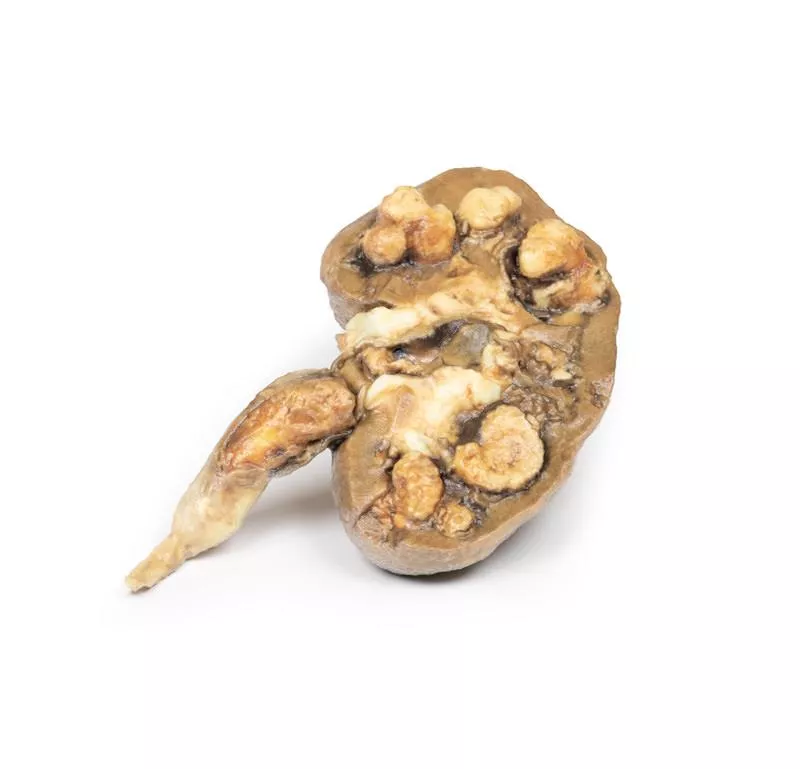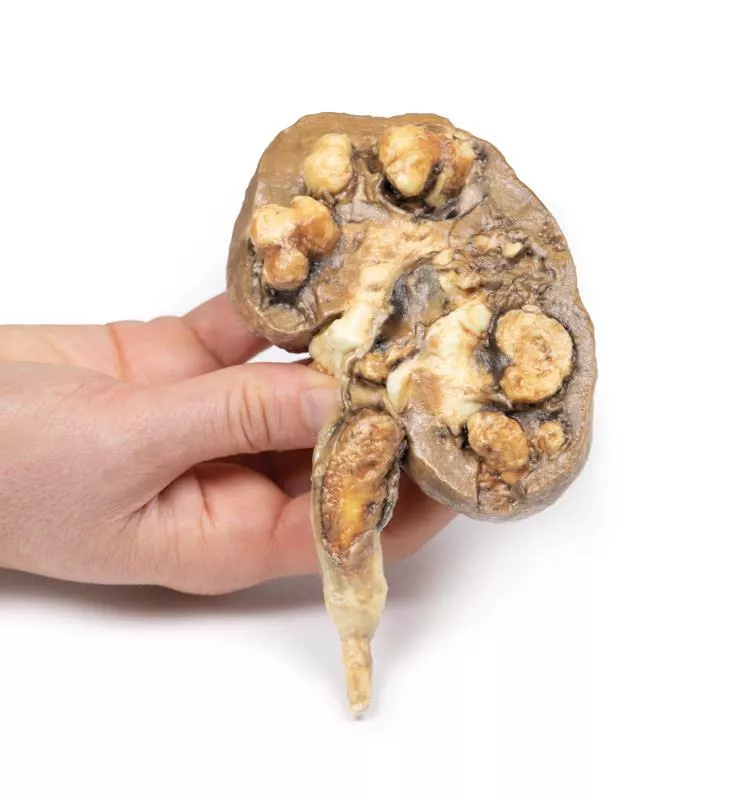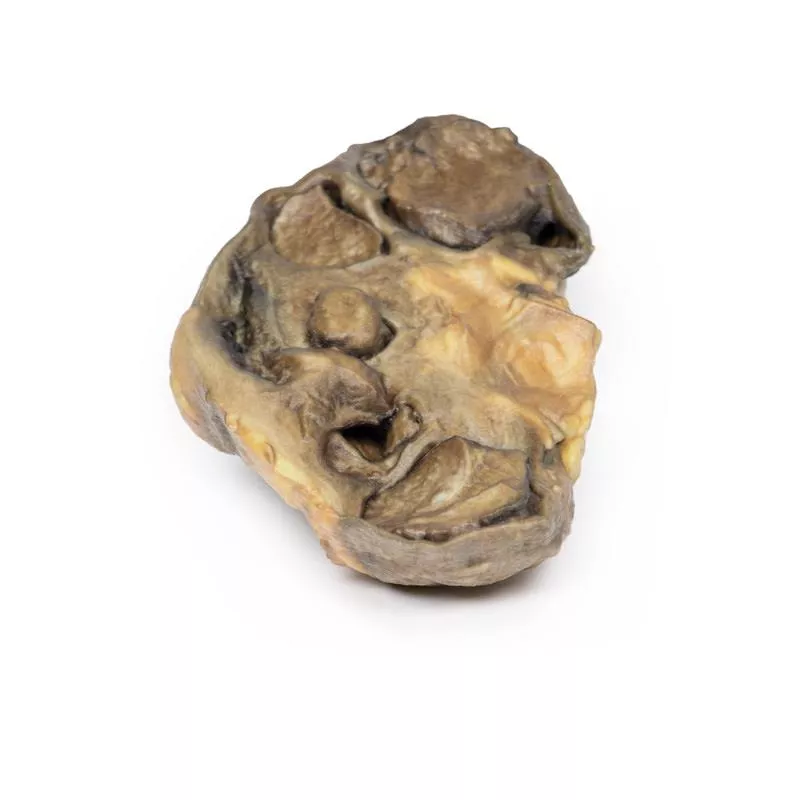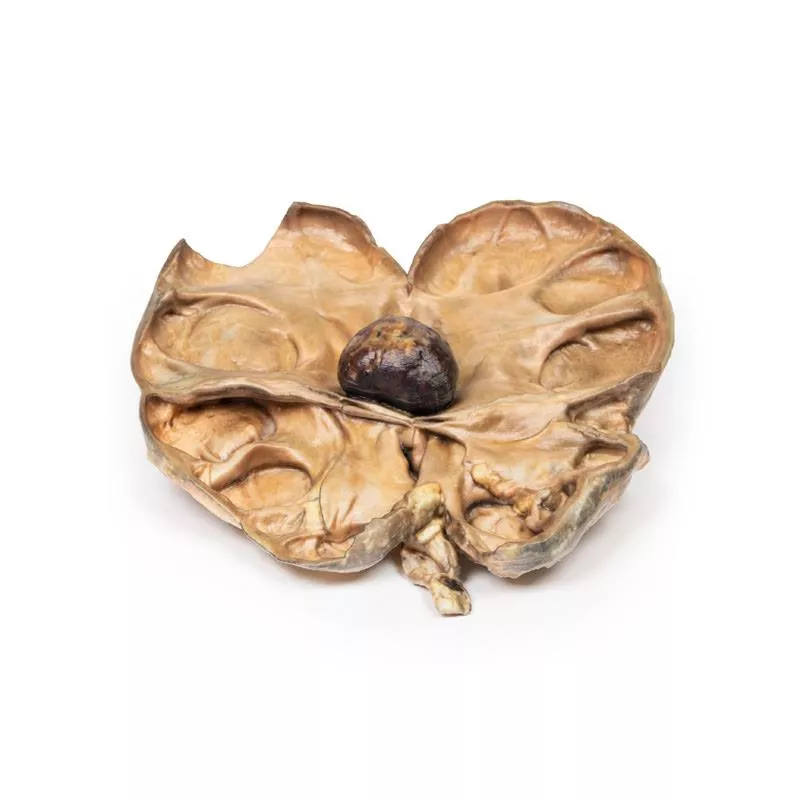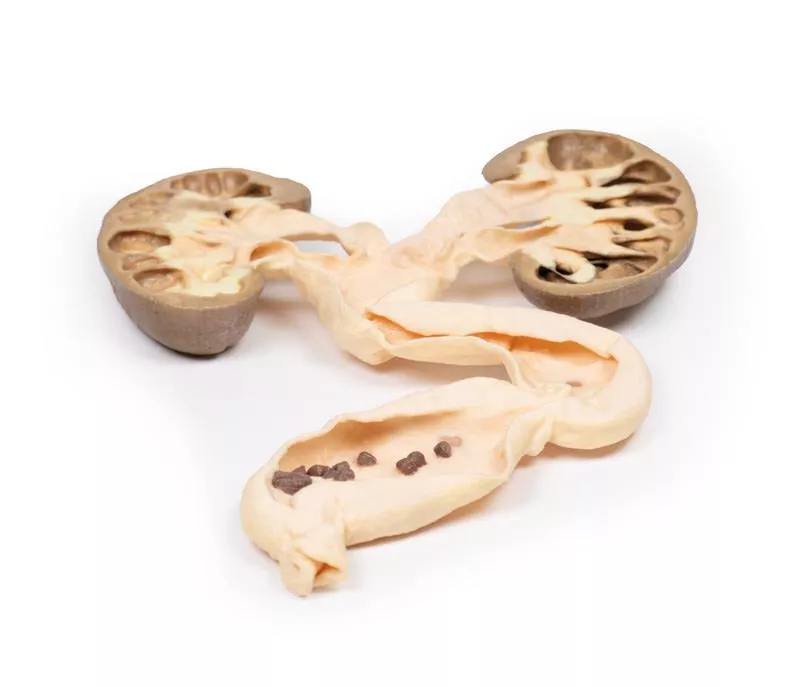Product information "Multiple Renal Calculi"
Clinical History
A 68-year-old male presented with fevers, rigors, and a 6-month history of intermittent bilateral flank pain and haematuria. Biochemical tests showed impaired renal function with normal serum calcium. CT revealed bilateral hydronephrosis, multiple renal calculi, and perinephric and subphrenic abscesses. The patient died from progressive renal failure.
Pathology
The bisected kidney specimen shows gross dilatation of the pelvi-calyceal system and severe renal atrophy, sometimes reduced to a thin rim. A large mottled brown-white calculus lies in the pelvis, with smaller stones in the calyces and one occluding the ureter, causing proximal dilation.
Further Information
Urolithiasis (renal stones) affects up to 1 in 10 people, most commonly in the kidneys. Risk factors include male gender, urine composition changes (hypercalciuria, hyperoxaluria), metabolic disorders (cystinuria, gout), diet, and environment. Symptoms range from severe colicky pain and haematuria to asymptomatic cases if stones remain in the pelvis or bladder.
There are four main types of stones:
- Calcium stones (70%), mainly calcium oxalate/phosphate, linked to hypercalciuria and hyperoxaluria.
- Struvite stones (5–10%), magnesium ammonium phosphate, associated with infections, forming large “staghorn” calculi.
- Uric acid stones (5–10%), in hyperuricemia (gout, leukemia).
- Cysteine stones, due to impaired amino acid reabsorption.
A 68-year-old male presented with fevers, rigors, and a 6-month history of intermittent bilateral flank pain and haematuria. Biochemical tests showed impaired renal function with normal serum calcium. CT revealed bilateral hydronephrosis, multiple renal calculi, and perinephric and subphrenic abscesses. The patient died from progressive renal failure.
Pathology
The bisected kidney specimen shows gross dilatation of the pelvi-calyceal system and severe renal atrophy, sometimes reduced to a thin rim. A large mottled brown-white calculus lies in the pelvis, with smaller stones in the calyces and one occluding the ureter, causing proximal dilation.
Further Information
Urolithiasis (renal stones) affects up to 1 in 10 people, most commonly in the kidneys. Risk factors include male gender, urine composition changes (hypercalciuria, hyperoxaluria), metabolic disorders (cystinuria, gout), diet, and environment. Symptoms range from severe colicky pain and haematuria to asymptomatic cases if stones remain in the pelvis or bladder.
There are four main types of stones:
- Calcium stones (70%), mainly calcium oxalate/phosphate, linked to hypercalciuria and hyperoxaluria.
- Struvite stones (5–10%), magnesium ammonium phosphate, associated with infections, forming large “staghorn” calculi.
- Uric acid stones (5–10%), in hyperuricemia (gout, leukemia).
- Cysteine stones, due to impaired amino acid reabsorption.
Erler-Zimmer
Erler-Zimmer GmbH & Co.KG
Hauptstrasse 27
77886 Lauf
Germany
info@erler-zimmer.de
Achtung! Medizinisches Ausbildungsmaterial, kein Spielzeug. Nicht geeignet für Personen unter 14 Jahren.
Attention! Medical training material, not a toy. Not suitable for persons under 14 years of age.



















